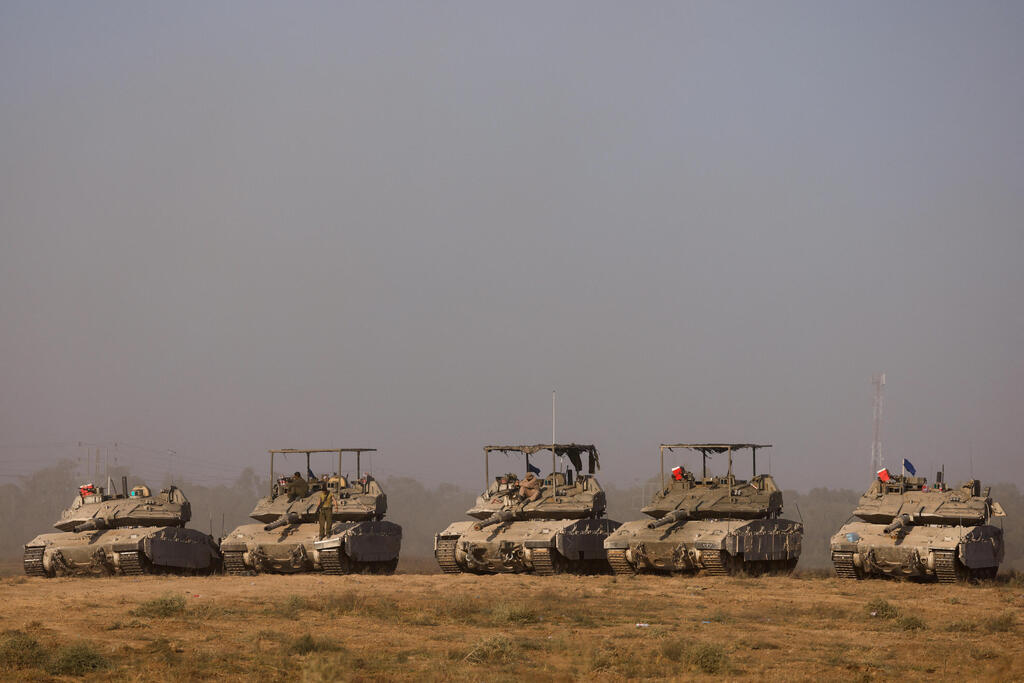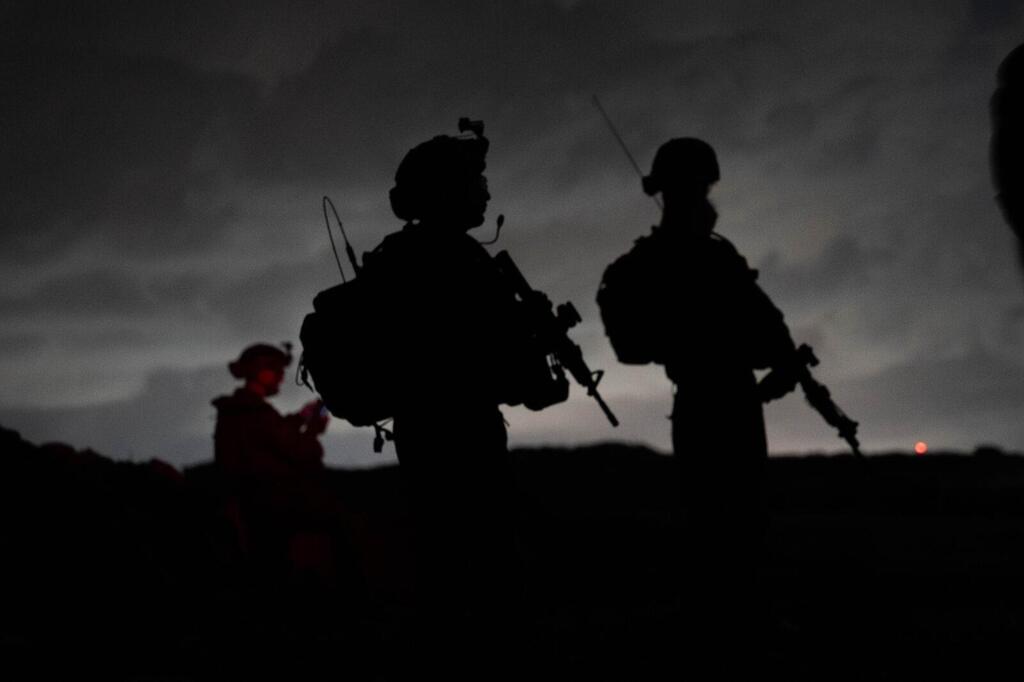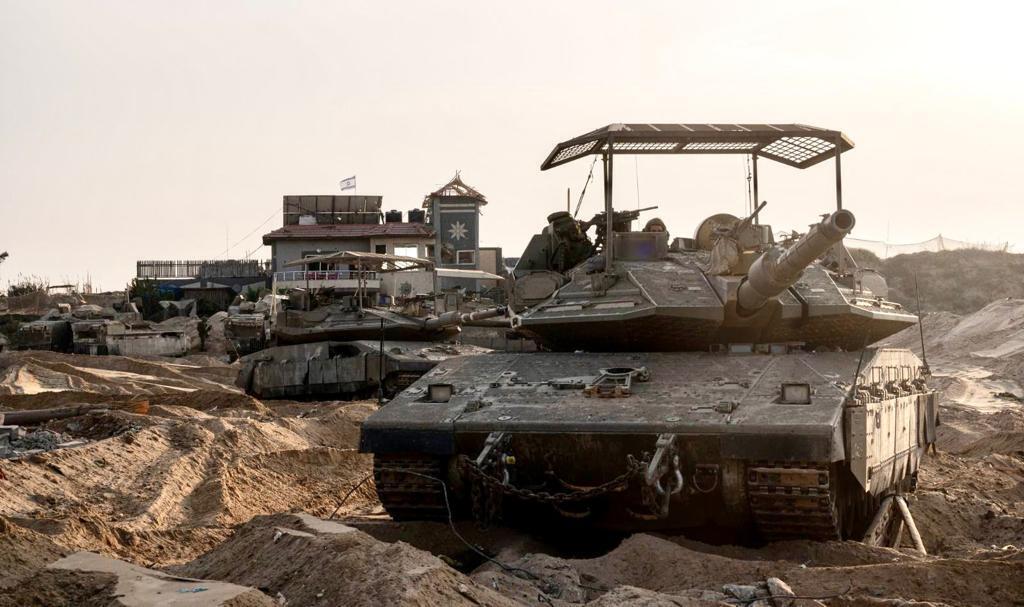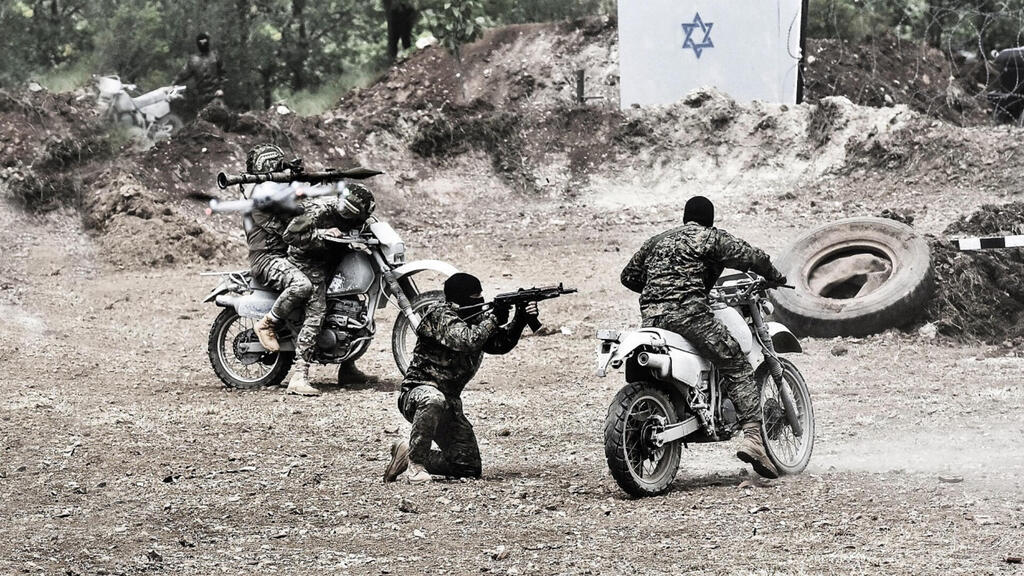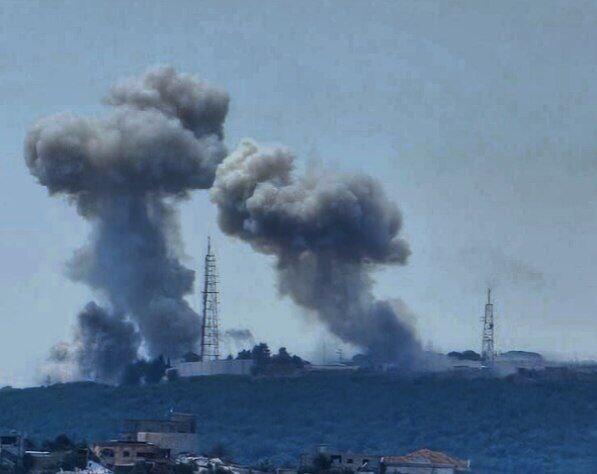Gaza: An offensive rollercoaster
The IDF's ground offensive in Gaza, initially slow but later accelerated, has been both a success and a source of frustration for field commanders.
It is now clear as day that without a ground incursion, it would have been impossible to dismantle the threat. This is primarily because Hamas had a strategic advantage it built for itself in the form of underground tunnel networks, where it hid, fired rockets, produced weapons and managed its war operations.
The IDF knew these networks were not necessarily measured by miles but by "strategic centers of gravity." As long as these remained intact, Hamas could survive. And as long as it survived, it could recover and launch another attack on Israel.
The above-ground structures, located within civilian areas, were also built as regional centers of gravity. The IDF needed to physically reach these sites to eliminate the terrorists operating from them, who defended the shafts leading to the underground. The IDF launched an operation involving three divisions fighting in the northern part of the Gaza Strip. A senior IDF commander remarked, "If you don’t initiate and attack, at best, you end up with a draw."
This was not a decision made lightly. In the weeks following the massacre, Prime Minister Benjamin Netanyahu met with various former officials, including retired Major General Yitzhak Brik, who warned him that the IDF was unprepared and incapable of carrying out the mission, which would result in thousands of casualties.
The Americans also tried to caution Netanyahu and the IDF General Staff that a ground offensive in Gaza would not only result in losses but would also lead to destruction that Israel would struggle to withstand in the face of global public opinion.
What tipped the scales was the insistence of Defense Minister Yoav Gallant, IDF Chief of Staff Herzi Halevi and Operations Directorate Commander Major General Oded Basiuk. They convinced decision-makers that after several weeks of preparation, the IDF would be capable of executing a successful offensive to take control of Gaza, dismantle Hamas' military capabilities and then maintain the achievement through a security perimeter along the Palestinian enclave’s edges and targeted raids on areas where Hamas would attempt to rebuild its forces.
6 View gallery
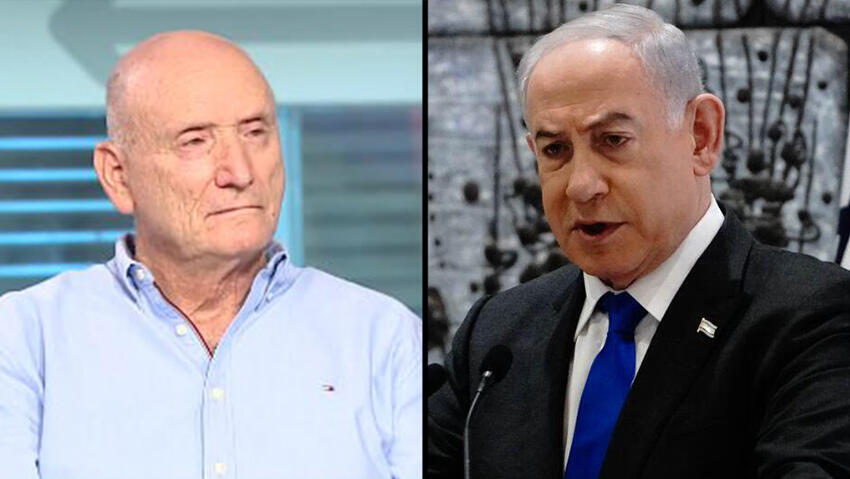

Major General Yitzhak Brik and Prime Minister Benjamin Netanyahu
(Photo: Shalev Shalom, Yaron Brener)
The motivation, initiative, rapid mobilization and combat readiness displayed by both the reserves and regular ground forces during the preparation period boosted the confidence of the IDF's top brass, who had been demoralized by the sense of responsibility they felt for the failures of October 7.
For the sake of caution, they decided to adhere to the IDF's traditional operational concept—attacking one main front, the center of gravity, while holding off on others. This approach was taken despite the fact that the Air Force could have divided its strength and operated with full force in both the north and the south, as initially planned.
Historians will ultimately decide whether the decision to act in Gaza while holding off in the north, and evacuating residents, was justified. But it clearly ensured an efficient use of the IDF's assaulting forces and a prudent management of the military’s stockpile of munitions and equipment.
During the waiting period for the ground offensive, the IDF—together with the Shin Bet—refined its tactical approach for coordinating ground and air forces to operate effectively in a large, vertical battlefield, fighting both above and below ground.
In the opening phase, it was decided to attack along several axes with tank battalions, infantry and engineering units, closely coordinated with air and ground fire support. One of the innovations was the immediate availability of air support—whether from fighter jets, drones or helicopters—at every stage of the battle, supporting both mounted and foot soldiers.
The Air Force was integrated from the planning stages through to the ground combat. Precision munitions of various sizes were dropped on buildings and compounds where intelligence identified enemy forces, sometimes just 100 meters from IDF troops. In thousands of sorties and strikes, there were four cases of friendly fire that injured IDF soldiers.
The simultaneous assault on the terrorists' centers of gravity, both above and below ground, initially progressed slowly. The IDF had already informed the political leadership that dismantling the terrorist armies built by Hamas and Palestinian Islamic Jihad over decades would take about a year, but the slow pace—especially with the aid of the Engineering Corps’ D9 bulldozers—frustrated some field commanders early on. The underground operations, in particular, advanced heavily and sluggishly.
On the other hand, the above-ground fighting unfolded far more effectively and quickly, following the Air Force’s intense so-called "belt of fire" strikes on high-rise buildings and Hamas resistance hubs before the ground offensive even began.
Initially, Hamas battalions emerged from tunnels and launched large-scale counterattacks on the advancing forces, using new types of deadly RPG launchers and proximity explosives attached by militants to tanks and armored vehicles. However, the Trophy active protection systems proved their worth and reduced casualties.
Counterattacks—such as at the Force 17 outpost in the Jabalia area and elsewhere—failed. Afterward, terrorists shifted to small-unit tactics, emerging from tunnel shafts to attack, but these proved far less effective.
The relatively low number of IDF casualties during the fighting in Gaza and the north was due not only to the protection provided by the armored vehicles and the Trophy systems but also to the defensive tactics the IDF employed.
Crucially, rapid evacuation—coupled with life-saving medical care—played a significant role in reducing the toll. A total of 346 IDF soldiers fell during the ground offensive in Gaza, out of 715 killed in the entire war. Some 4,481 were wounded, including 2,298 in Gaza; of those, 20 remain hospitalized in serious condition, 145 in moderate condition and four with minor injuries.
The five-phased plan in the north
It is now known that for several days, Hassan Nasrallah seriously considered capitalizing on the momentum and shock caused by Hamas' attack to execute Hezbollah's operation to conquer the Galilee, led by the terrorist group's elite Radwan Force.
Hezbollah has been planning this operation for at least ten years, and by October 8, 2023, they had 2,400 Radwan fighters and 500 Palestinian Islamic Jihad operatives ready for action, heavily armed with explosives to breach concrete walls and fences, as well as ladders for scaling into border-adjacent Israeli communities and IDF outposts in the north. Had this plan been carried out, it would have been catastrophic—far worse than Hamas' attack.
Underground Hezbollah tunnels uncovered by IDF in southern Lebanon
However, the rapid deployment of three IDF divisions to the northern border and the efficient defensive preparations, despite the IDF’s primary focus on Gaza, likely caused Nasrallah and Hezbollah’s commanders to decide against exploiting Israel’s confusion and shock following the deadly October 7 attacks in the south.
Hezbollah’s plan is prepared, effective and far more dangerous than Hamas’, but the Gazans stole the spotlight. It took a few days for the IDF to be convinced that Nasrallah was content with supporting Hamas through rocket fire and fiery statements of solidarity with Palestinians in Gaza, despite having the capability to launch a ground invasion into the Galilee. Radwan Force fighters, supported by Hezbollah’s firepower, were positioned right on the border.
What also helped restrain Hezbollah was the Israeli Air Force’s readiness for action in the north, as well as the swift deployment of IDF reservists to strategic positions, effectively blocking potential enemy routes.
Northern Command faced two primary threats. The most dangerous was the Radwan Force, positioned mere hundreds of feet from Israeli communities and outposts, posing an immediate threat. The second was Hezbollah’s extensive missile arrays, hidden in southern Lebanon and aimed at northern Israel, roughly up to the Haifa-Tiberias line.
With the political and military leadership deciding to focus on Gaza as the active front while holding the line in the north, Northern Command, under the guidance of Major General Ori Gordin, formulated a phased action plan. The broad goal was to erode Hezbollah’s strength and prepare the ground for a future operation that would involve aerial bombardments and ground maneuvers, set to launch once the General Staff advised the political echelon to shift the focus from the south.
In line with this plan, the IDF initially concentrated on neutralizing the immediate threat posed by the Radwan Force. An additional effort was made to repel infiltration attempts by militant cells from various Palestinian organizations.
Since the political and military leadership decided that Gaza would be the active front while the north would be contained, Northern Command, under the guidance of Major General Ori Gordin, developed a phased action plan.
The primary goal was to wear down Hezbollah and prepare the ground for a future operation, involving airstrikes and ground operations, to be executed when the General Staff recommended shifting the focus from the south.
According to this plan, the IDF first concentrated on eliminating the immediate threat posed by the Radwan Force. Another key effort was repelling infiltration attempts by terrorist cells from various Palestinian organizations.
The danger posed by the Radwan Force and the intensified short-range firepower of Hezbollah’s anti-tank missiles and myriad rockets was the reason for the massive evacuation of approximately 60,000 residents from their homes in the Galilee along the border. Some evacuated on orders, while others did so voluntarily. They have yet to return home.
In the first phase, Northern Command succeeded in pushing a significant portion of the Radwan Force 3-5 miles away from the border through airstrikes and artillery fire. Hezbollah fighters abandoned their well-fortified positions—some in bunkers and some in trenches—concealed within Lebanon’s mountainous terrain.
In the second phase, according to reports, the IDF began sending small ground forces on covert raids into these positions to seize weapons and equipment left behind. Meanwhile, the IDF improved its ability to locate and neutralize Hezbollah's anti-tank missile launchers, forcing them to retreat and reducing their effectiveness. Hezbollah’s attempts to strike with its suicide drones and heavy Burkan and Falaq rockets, based on Nasrallah’s "eye for an eye" doctrine, met with limited success.
In the third phase, alongside efforts to counter drones and rockets, Northern Command focused on eroding Hezbollah’s command and control structure in preparation for a potential ground incursion into Lebanon, possibly reaching the Litani River or beyond. Hezbollah’s field commanders began disappearing in large numbers, as the IDF, using precise intelligence and airstrikes, systematically eliminated them one by one.
The fourth phase began in August: Operation Northern Arrows. The opening strike, which stunned Hezbollah and the world, involved the detonation of thousands of pagers and walkie-talkies—an action attributed to Israel. But the peak came with the assassination of Nasrallah last Friday.
The fifth phase commenced overnight Tuesday this week, with the IDF conducting a limited ground operation aimed at clearing Hezbollah’s rocket-launching sites and Radwan Force positions near the border.
The objective is to prevent Hezbollah fighters from launching direct, short-range fire on Israeli border communities and IDF outposts. Once this goal is achieved, the ultimate aim of the war can be pursued: ensuring that the residents of northern Israel can safely return to their homes.
West Bank: Avoiding a third Intifada
Alongside the fighting in Gaza, Central Command launched an aggressive campaign in the West Bank. The objective was to prevent terrorist groups, inspired by Hamas and Iran, from organizing in refugee camps to attack settlements and targets inside Israel, and to avert the outbreak of a full-scale third Intifada involving the entire West Bank population, which would overwhelm the already stretched IDF forces. This effort has so far been successful.
The Iranian offensive: The birth of a regional defense network
A significant achievement in the war came during the night of April 13-14, when Iran and its proxies launched a barrage of ballistic missiles, cruise missiles and explosive drones at Israel. To repel this attack, U.S. Central Command (CENTCOM) and the IDF General Staff executed a detailed plan that exceeded expectations in its effectiveness.
This success laid the groundwork for a potential regional air defense system, which could involve Sunni Arab states in defending against missiles, drones and possibly even Iran's future nuclear capabilities.
Get the Ynetnews app on your smartphone:



